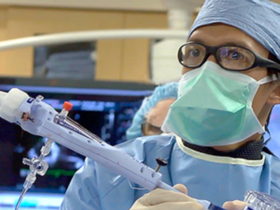Is there a difference between a help desk and a service desk? This is a hot topic in the IT world, and many have an opinion they feel strongly about. Google “help desk vs. service desk” and read through any of the 1,080,000,000 results provided.
Before we answer the question, however, we need to discuss a related tool, the trouble ticket system. A trouble ticket system is an application used to track the detection, reporting and resolution of an issue, outage or request. A trouble ticket (TT) is the actual issue, outage or request being tracked. Most trouble ticket systems provide tracking of the TT throughout its lifecycle, from the time it’s opened until the time it’s closed and the issue is resolved. It allows for adding notes so the issue can be described and the resolution added.
The help desk is actually a function, which uses a TT System. It is the people, processes and tool(s) established to provide support and/or respond to issues happening within and organization or to support external customers with issues they may have with vendor applications or services. The goal of the help desk is tactical and is focused on resolving end-users’ (or customers’) issues in a timely fashion. The help desk is reactive in nature and has an expectation of resolving issues efficiently.
The service desk is a collection of functions, preferably consolidated into a single application. The service desk contains the help desk function and utilizes the TT system within. It provides tactical capabilities, including service request (incoming requests from the consumers of the service being provided) and incident management (rapid response and remediation to anything that is having or could have an impact on the business). However, the service desk also provides many additional capabilities which go beyond the functionality of a help desk, such as:
Problem management: Supports the identification and remediation recommendations of the root cause(s) of incidents. It provides work-around procedures to be used until recommendations can be turned into formal change requests for approval and eventually implemented.
Configuration management: Tracking of “configuration items” (CIs) for items that have configuration attributes associated with them, such as servers, desktops, laptops, applications, databases, network devices.
Change management: Tracking of change requests against CIs with associated approvals and instrumented change management process. The change management capability includes the ‘forward schedule of change’ and any identified risks associated with the proposed change, a backout plan if the change proves to be disruptive and other capabilities tied to a strong change management process.
Asset management: Provides inventory and asset control of company IT assets along with all the valuable asset information a company needs to track assets from the beginning of the asset lifecycle (request, purchase, receive, deployment), right through asset decommission and disposal.
Service catalog: Provides for the creation of service definitions available through the IT organization and, optionally, other company services offered by other departments within the organization. This topic may require a future article on how companies are successfully using their service desk as a “store front” for all services internally to the organization.
Service level management: Allows organizations to establish service contracts, setup and track service level agreements (SLAs), establish internal operation level objectives (OLOs) or operation level agreements (OLAs) and many other activities around service definitions and service management.
There are many other functions a fully functional service desk can provide, such as release management, vendor management, software asset management, software license tracking, contract management, partner management and many others. My hope is that you see the value of having a consolidated service desk. As your organization grows, you’ll want your help desk function to also grow and mature as it takes on more services and begins to view itself as a service provider to the rest of the organization.
Currently, I’m fortunate to be working with some of the latest technology advancements in the service desk area including built-in data analytics, machine learning, smart agents, intelligent self-service, container technology, codeless configuration and social collaboration. Where this technology is headed is very exciting. If you’re considering moving from a typical TT System (open, track and close), consider moving to a consolidated service desk and transform your help desk function into a service-oriented service desk and more.











